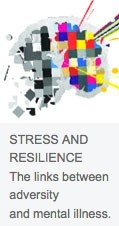- Select a language for the TTS:
- UK English Female
- UK English Male
- US English Female
- US English Male
- Australian Female
- Australian Male
- Language selected: (auto detect) - EN
Play all audios:
ABSTRACT THE services which H.S.H. the Prince of Monaco has rendered to the science of oceanography, during the last ten or twelve years, are familiar to every one interested in that
department of research. First in the small schooner _Hirondelle_, with no power but the strong arms of his Breton crew, and later, in the large and perfectly equipped auxiliary steam yacht
_Princesse Alice_, there is no branch of the science which has not been enriched by his enlightened enterprise and his unwearied perseverance. It may be interesting to the readers of NATURE
to know something of what was achieved in the summer cruise of 1895 in the waters of the North Atlantic, chiefly in the vicinity of the Azores. The dredging and other deep-sea operations
conducted on board the yacht herself were very successful, and produced an abundant harvest. The most interesting result of the cruise, however, was due to the lucky chance of a cachalot or
sperm whale being pursued by the whale-fishers of Terceira, and killed almost under the bows of the _Princesse Alice_, and to the prompt measures taken by the Prince to utilise this rare
opportunity, the importance of which for science he immediately and intuitively perceived. The preliminary reports of the investigation of the material thus collected by the Prince, in
collaboration with the Portuguese whalers, go to show that an almost entirely new and unsuspected animal kingdom has been opened to the zoologist. ARTICLE PDF Authors * J. Y. BUCHANAN View
author publications You can also search for this author inPubMed Google Scholar RIGHTS AND PERMISSIONS Reprints and permissions ABOUT THIS ARTICLE CITE THIS ARTICLE BUCHANAN, J. The Sperm
Whale and its Food. _Nature_ 53, 223–225 (1896). https://doi.org/10.1038/053223f0 Download citation * Issue Date: 09 January 1896 * DOI: https://doi.org/10.1038/053223f0 SHARE THIS ARTICLE
Anyone you share the following link with will be able to read this content: Get shareable link Sorry, a shareable link is not currently available for this article. Copy to clipboard Provided
by the Springer Nature SharedIt content-sharing initiative







